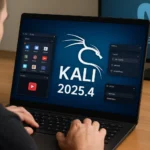Cybersecurity researchers have identified a significant evolution in the Coyote banking trojan, which now leverages Microsoft UI Automation (UIA) technology to target banking and cryptocurrency platforms. This represents a groundbreaking shift in financial malware tactics, as cybercriminals exploit accessibility features designed to assist users with disabilities for malicious credential harvesting operations.
Understanding Microsoft UI Automation in Cyberattack Context
Microsoft UI Automation serves as a programmatic interface that enables assistive technologies to interact with Windows application user interface elements. The framework provides capabilities to read element properties, control interface components, and monitor real-time changes within applications.
The technology structures applications as hierarchical UI Automation trees, allowing the UIA API to traverse content, extract detailed interface element information, and simulate user interactions. Originally developed to ensure comprehensive device accessibility for users with special needs, this legitimate functionality has now been weaponized by threat actors.
Expert Warnings and Threat Materialization
Security specialists from Akamai issued prescient warnings in December 2024 regarding potential UIA exploitation risks for credential theft operations. Researchers emphasized that this technique could bypass EDR system protective mechanisms across all Windows versions, including legacy systems dating back to Windows XP.
These expert predictions materialized in February 2025 when the first documented attacks utilizing this methodology were observed in the wild. Coyote emerged as the first known malware strain to abuse Microsoft UIA capabilities for sensitive data extraction, marking a concerning milestone in financial cybercrime evolution.
Coyote Banking Trojan Development Timeline
Initially discovered in February 2024, the Coyote banking trojan originally focused on credential theft from 75 banking and cryptocurrency applications, primarily targeting Brazilian users. The malware’s early iterations relied on conventional attack vectors including keylogging techniques and phishing overlay deployment.
The current Coyote variant maintains traditional attack methodologies while incorporating advanced UIA exploitation capabilities. These enhanced features activate specifically when users access banking or cryptocurrency services through web browsers, demonstrating sophisticated target identification mechanisms.
Technical Implementation of UIA Exploitation
When Coyote cannot identify target applications through window title analysis, it deploys UIA functionality to extract web addresses from browser user interface elements, including active tabs and address bars. The extracted data undergoes comparison against a hardcoded list containing 75 targeted financial services.
Primary targets include major financial institutions such as Banco do Brasil, CaixaBank, Banco Bradesco, Santander, Original bank, Sicredi, and Banco do Nordeste, alongside cryptocurrency platforms including Binance, Electrum, Bitcoin, and Foxbit.
Future Threat Development Potential
While current UIA exploitation remains limited to reconnaissance phases, Akamai researchers have demonstrated the technology’s potential for direct credential theft from targeted websites. This capability expansion represents a significant escalation in threat sophistication and effectiveness.
Security researchers note that “parsing nested elements from external applications without UIA presents non-trivial challenges. Effective nested element content reading requires developers to possess deep architectural understanding of specific target applications.”
The UIA advantage enables Coyote to perform verification checks regardless of operational mode—online or offline—which substantially increases successful identification probability for banking and cryptocurrency platforms during subsequent credential harvesting operations.
Comparative Analysis with Mobile Threats
This development parallels the widespread abuse of Accessibility Services in Android operating systems, which has reached epidemic proportions and poses serious threats to mobile device users. The emergence of similar techniques in Windows environments demands immediate attention from information security professionals.
The situation underscores the critical need for developing appropriate defensive mechanisms to prevent further proliferation of accessibility feature abuse. Organizations must reassess their security postures and implement comprehensive monitoring solutions capable of detecting UIA-based attack patterns. As financial malware continues evolving beyond traditional detection methods, cybersecurity teams require advanced threat intelligence and behavioral analysis capabilities to identify and mitigate these sophisticated attack vectors effectively.






